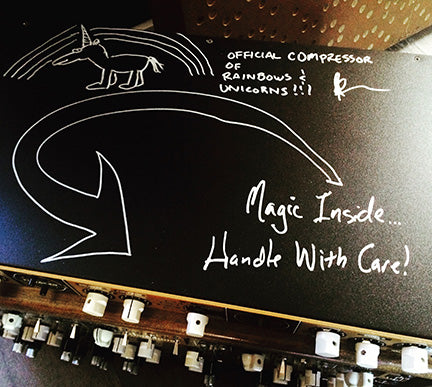Every part of a song has it’s own beginning, middle, and end. It’s your job to move your audience through it. How well are you doing it?
I’ve been yammering on and on about arrangement for years, usually to the effect of ‘the better the arrangement, the easier everything else gets.’ That simple truth has long been exploited by the world’s most influential producers, composers, and songwriters, from A-Trak to Duke Ellington and all points in between.
But if you’re not totally clear on what exactly an arrangement is, then it’s not terribly helpful to be told ‘make it better’. What’s the “it”? If you’re not confident you know the answer, I can relate; there was a time when I had no idea what a ‘song’ was versus an ‘arrangement’ versus a ‘production’.

Today I’ve got a solid grasp on the differences between all 3, but it can take a long, long time for that to happen, and I’m still a student as much as a master.
So rather than attempt to explain what an arrangement is --- a process that could easily encompass an entire book --- I’m going to skip over the conceptual stuff and give you a few very specific, very concrete suggestions you can apply to your productions right now, whether you’re an engineer, a producer, a player, or all of the above. In the process, your arrangements will take a big step up in terms of movement, dynamics, and contrast… and if you hone the skills involved in implementing these suggestions, you’ll find it becomes easier and easier to craft mixes that grab the listener’s ears from bar one and don’t let go until the last note fades into digital black.
The subject of today’s arrangement study is, in my humble opinion, one of the most powerful weapons in the world of songwriting and production: dynamic transitions. A dynamic transition is exactly what the name implies: anything that creates a palpable shift, from one level to another, in the energy of the song.
Question: in a typical 4 minute song, how many dynamic transitions are you currently creating with the deliberate intent to forecast, announce, and execute a visceral change in the musical landscape? If the answer is anything less than, say, 14, I respectfully submit that you’re completely missing the boat.
Let’s take a very simple, contemporary pop-style arrangement; if you’re doing EDM, the section names won’t apply 1:1, but you likely have distinct musical sections so the principle is the same. The critical thing to realize is that each section of a song has a beginning and an end, but more importantly each section flows directly from one to the next.
- Intro
- Verse
- Pre-Chorus (aka Bridge, aka Lift)
- Chorus (aka Hook, aka Refrain)
- Re-Intro
- Verse
- Pre-Chorus
- Double
- Chorus
- Outro (aka Coda)
So my question to you is this: how are you connecting all of these sections? Not just musically, but energetically? For example, is anything happening in bar 6 or 7 of the verse that clues my ear in to the fact that a whole new section is about to happen?
Did that thing involve a technically implemented, artistically executed slice of drama that pulls the listener across an emotional bridge and melts the boundaries of one musical passage into one another?
That’s a massive job. How well are you doing it?

If you were to draw a line across a page, and that line represented the energy level of your song from start to finish, where would the line step up and step down? Where do the shifts occur? Are any of them unexpected? What shape do they take? Are they seductive slopes? Graceful arcs? Fierce explosions?
Or are they simply abrupt little shifts on a tedious grid, middling little stairstep affairs with no precursor and no aftermath?
For many of the songs people send to me for advice and feedback, especially electronic and loop-based compositions, what I hear (energetically) is a flat line in the intro, no change into a flat line in the verse, a small and abrupt change into a slightly higher but equally flat line in the prechorus, and another small but abrupt stairstep up into a flat line in the chorus. At that point it really doesn’t matter how impassioned the vocal melody is, or how cool the snare sound is, or how fat the bass is… you might have hooked my attention for the first few bars, but the arrangement is so flat & uninspired that I quickly lost interest. In the space of the first 60 seconds there were at least a dozen opportunities to craft one-of-a-kind, engaging, and (most importantly) visceral moments that instantly elevate a production from ‘mediocre’ to ‘compelling.’
Hopefully I’ve got some gears turning in that head of yours. Next week, we’ll dig into some very specific suggestions on the kinds of dynamic transitions you can create, the kinds of simple tricks and tools --- both musical/compositional and production/engineering --- that you can start injecting into your tracks right away and, in the process, take a serious step up in the game of creating art that inspires.
Until then...
Gregory Scott - ubk